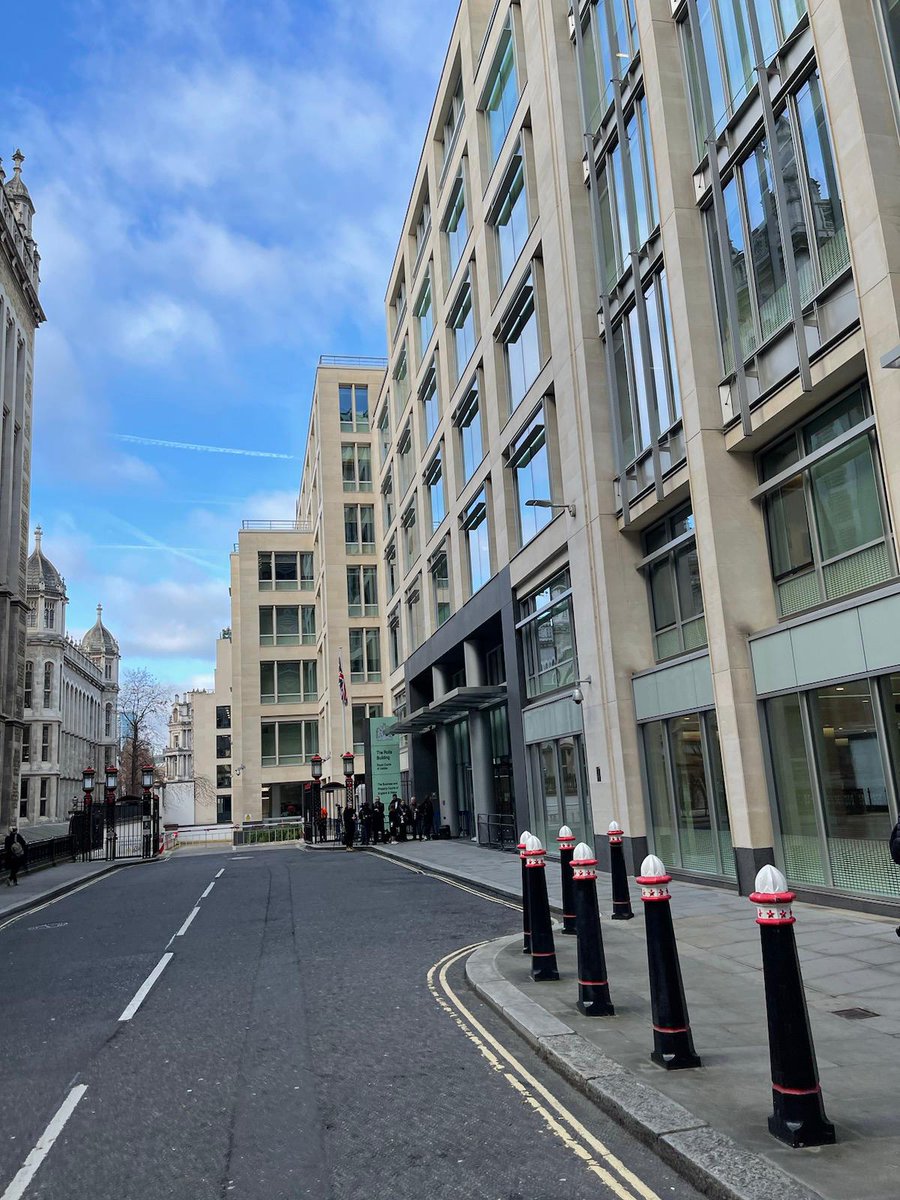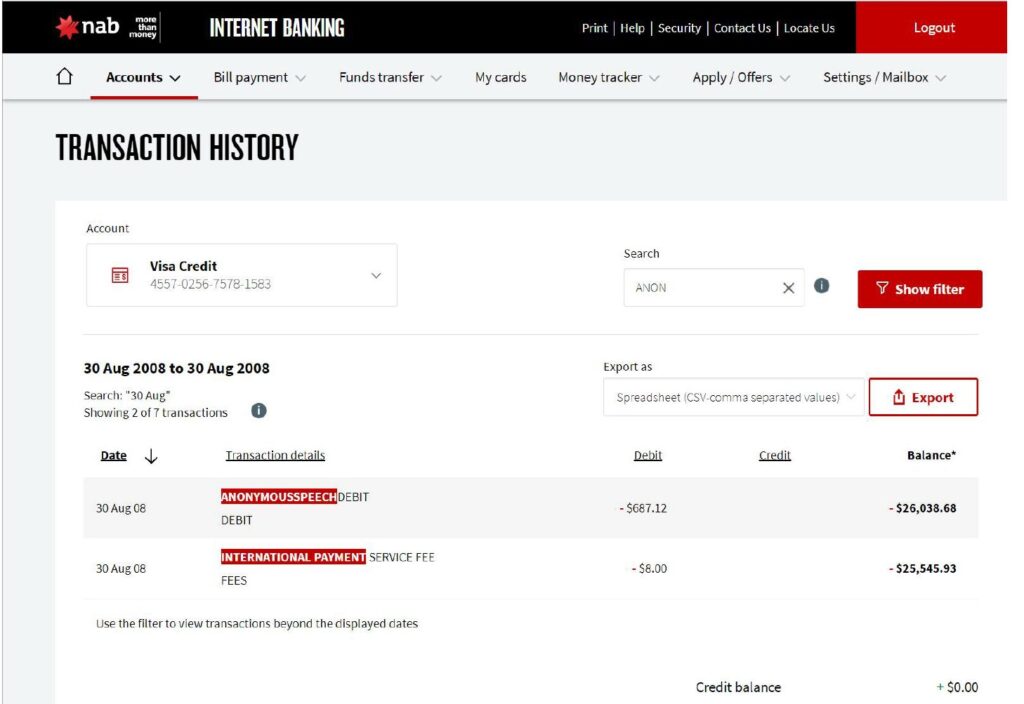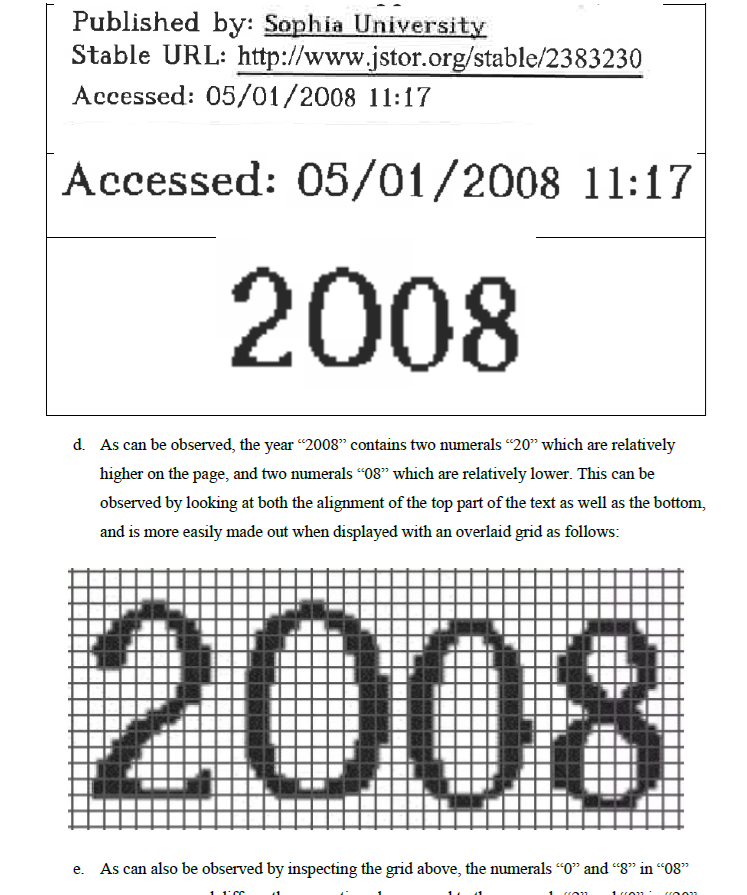
I attended the first two days of the civil proceedings between COPA and Craig Wright, in central London. My understanding is that the case is expected to go on for a while, with mid March expected as the end date. Below are my brief thoughts from the second day.
The first thing to note was that the courtroom was absolutely boiling hot, almost unbearable. There was no air conditioning and there was no fan while proceedings were taking place, because the fans were considered too noisy. Day 2 of the trial was Craig’s first day of cross-examination and he is scheduled to continue for six days in total. Six full long days, morning and afternoon. This must be very stressful for him and intense, given the heat in the room. One of the only things said by Craig’s barrister on the day, was to complain to the judge about the heat. Craig’s barrister joked that we might all die by the end of the trial due to the heat. The judge agreed and said he was exploring the option of moving to another room, but said the earliest this could take place was friday.
Due to the heat, I found it incredibly difficult to remain focused all day in court. I brought in my own 2 litre bottle of water, and filled it up from the tap half way through. This bottle was empty by the end of the day, so in total I consumed 4 litres of water in the courtroom in just one day.
Below, I have summarised three parts of the cross-examination of Craig Wright, which I found to be most memorable on the day.
The “Johnny” comment
The first moment relates to documents which supposedly show Craig Wright purchasing the Bitcoin.org domain in the 2009 period with his credit card. The COPA barrister started the session by putting forward various statements from Craig Wright in 2019, where Craig claimed he could prove to a court he was Satoshi, by showing financial statements from the 2009 period when he purchased the web domain. COPA then showed an email Craig Wright sent to Jimmy Win in 2019, showing exactly that, credit card proof, showing the purchase of the Bitcoin.org domain name. This email and the supposed financial records are shown below.


COPA’s independent expert witness, Mr Madden, reviewed this email and determined that the credit card evidence was faked for various reasons. Rather than refute this, Craig now accepts that these documents were indeed fakes, only not by him, but by some Reddit user. Craig claimed that he emailed them to Jimmy Win, to highlight the fake documents to Jimmy, even though the email made no mention of this.
This next part of the cross-examination became very weird, which is why I highlight it as the most memorable moment. The COPA barrister pointed out that the fake credit card document had been used as evidence that Craig was Satoshi in the Kleiman case. Craig was therefore asked, Why did he allow this? Why did Craig not mention that these were fake? Of course, from COPA’s point of view, what actually happened is that Craig did indeed fake the documents himself and he tried to use them as evidence, supporting the claim that Craig is Satoshi, both in the Kleiman case and even in this COPA case. Only when the expert witness proved the documents were fake, did Craig change his story, and claim they were fake. Craig told the court that he did tell his lawyers in the Kleiman case that the documents were faked. When asked which lawyer, Craig then said he didn’t think he could say, due to attorney client privilege. The judge then intervened, stating Craig could say the lawyer’s name. At this point Craig hesitated and then uttered some words, something like:
Johnny −− I probably don’t remember Johnny’s name, I haven’t dealt with him in a while. Can I get back to you on his last name?
I was pretty stunned by this. To me it felt that Craig was just making this totally up on the spot and it felt like a very blatant lie. It felt like a real gotcha moment. I glanced around the room, to look for a reaction from others. Most people were silent and displayed no emotion. It looked like everyone was struggling with the heat. The judge looked serious and he didn’t seem to react to what appeared like a blatantly lie to me at all.
The judge then asked what firm the lawyer was from. The best Craig could come up with was:
He’s an American firm that was basically dealing with one of the American entity companies. He’s a corporate lawyer. But I can get his name next break very quickly, I just can’t remember it off the top of my head.
This part of the session felt absolutely ridiculous to me. I could barely believe what I was hearing.
It should be noted that later in the afternoon, the COPA barrister showed on screen credit card statements belonging to Craig and credit card receipts, from the 2009 period, showing that the credit card number in Craig’s 2019 email was indeed Craig’s credit card number, and it was the one he used in 2009. If the email in 2019 was faked, by someone on Reddit other than Craig, how did this person know Craig’s credit card number at the time? It should also be noted that Craig did not reveal “Johnny’s” full name to the court in the afternoon, as far as I recall.
Greg Maxwell and the wrong dates
A video was shown to the court of Craig from the 2019 period, showing a document on the screen. The document purported to show that Craig had chosen the name Satoshi Nakamoto, because Tominaga Nakamoto was the “Adam Smith of Japan”. Critically the document had a date on the bottom, indicating it was accessed in 2008. Craig was showing this in the video, in an attempt to support the claim he was Satoshi. Craig claimed he found the document in a drawer and that it had been there for years.
The COPA barrister then presented various pieces of evidence to the court that indicated that 2008 date was manipulated, including the fact that the second part of the date, the numerals “08” were smaller than the numerals “20”. This is something that Craig acknowledged. An image of these numerals is shown below.

The COPA barrister went on to say that the expert witness, Mr Madden, had actually found an original version of the document, with a date stamp stating it was accessed in 2015. This document was shown to the court and in this case, the numerals “15” were sized correctly. Mr Wright contended that the 2015 dated version was a forgery and the 2008 dated version was authentic. Mr Wright mentioned that he had a lot of enemies that wanted to discredit him, like Gregory Maxwell, and that he could have forged the 2015 dated document. However, and this is where things get weird again, the COPA barrister mentioned that Mr Madden had found the 2015 document on the Way Back Machine from a 2016 date. Craig’s timeline therefore simply does not add up.
For instance, how could Mr Maxwell, or anyone else for that matter, forge the document in 2016? How would they know that three years later in 2019 Mr Wright would use this document as evidence he was Satoshi? Since they could not have known that, why would they fake the document? It seems to me that they could not have. Therefore, Craig’s claim that one of his adversaries manipulated the document with the 2015 timestamp made no sense whatsoever. The timeline did not match up. This point was made to Craig by the COPA barrister. In response Craig just emphasised how cunning and mischievous Greg Maxwell was, and that Greg Maxwell had quickly refuted many of Craig’s claims very quickly for years. For instance Craig said:
As an example, Mr Maxwell, minutes after Wired produced things, had a long paper discrediting falsely my PGP keys, something that would take days to write.
Craig did not comment on how Greg could have predicted three years in advance that Craig would use this document to support his claim to be Satoshi. To me, Craig’s testimony here felt incredibly weak. I think this was obvious to many in the courtroom.
Plagiarising and backdating at the same time
The third moment from court today which stands out, is another piece of evidence put forward by COPA. It is related to an academic paper Wright published, dated in around the 2008 period. As far as I remember, this paper was mostly about infectious diseases, but Bitcoin was mentioned. The COPA barrister then displayed another paper, written by another academic, post 2012. It was shown to the court that passages from the 2012 paper were used in Craig’s 2008 paper. Craig conceded this and argued that this was a legitimate use of someone else’s work, copied into his work, because this was research collaboration with other researchers. Craig was then questioned about the dates, in that the work he copied was published many years after the supposed date of Craig’s publication. Craig responded by arguing that he had access to pre-publication papers. Craig stated that he was at a research university at the time, focusing on infectious disease, and therefore obtaining this kind of early access, even years in advance, was normal. The COPA lawyer then pushed this point again and Craig replied, saying something like:
They were cited in another paper. You’re asking me do I have the cited papers from someone else’s cited paper. I have the paper where they cited that. Other Chinese people −− academics, also share.
The above did not seem reasonable to me. However, the COPA lawyer continued. COPA asserted that the post 2012 paper, by the other author, contained citations, citations of at least five other papers. As far as I can remember, the COPA council asserted that many of these citations had been removed from the references section of the paper published by Craig. However, the citations remained in the text. Of the citations which remained, four of them related to other papers published in the 2009 to 2012 period. Therefore, the COPA lawyer asserted, this meant that Craig not only had pre-publication access to the work he copied, but also four of the papers cited by it, which had also not been published by the date on which Craig claims to have published his paper. To me this seemed quite remarkable, Craig did not appear to respond directly to this point. Craig just asserted that academics share work and the works in this case were from some Chinese academics, which tend to share.
